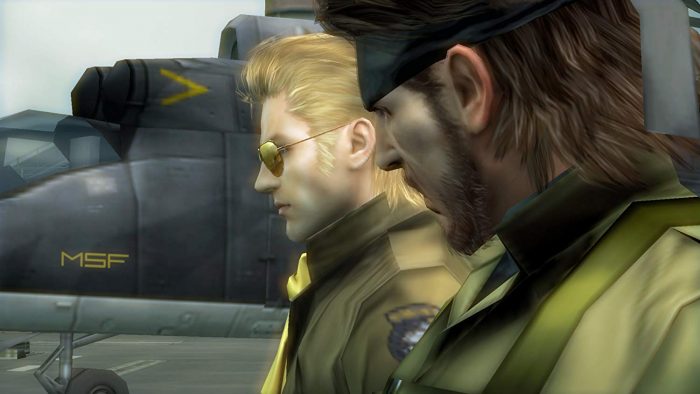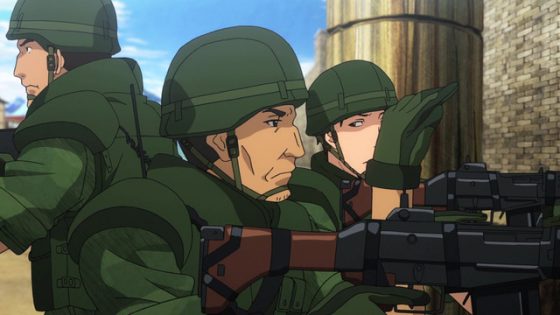
For the past 70 years, Japan has given their own critique in regards to war due to their loss and sins back in World War II. As the only nation to have a nuclear weapon fired upon them, a lot of their works in pop culture from Godzilla to This Corner of the World shows how those events have affected their mentality. Upon Japan’s surrender, the former Empire of Japan was dissolved as well as its official military. In its reconstruction, it brought about a new constitution which was largely written by some Americans. There is one such article in its present constitution that has been a source of controversy in recent years under the Shinzo Abe administration, who is the present Prime Minister of Japan upon the drafting of this article. That article is Article 9, which denounces war.
What is Article 9?

If you’ve played Metal Gear Solid: Peace Walker, then you know that Article 9 pretty much makes it illegal for Japan to go to international war, and that it should strive for peace instead. Article 9 was also implemented by the victorious Americans and in turn, Japan can’t officially have a military. Due to the Cold War progressing in that region a little after the war, notably in China and the Korean Peninsula, America has since maintained military installations throughout the nation to more or less act as Japan’s defenders from possible foreign invaders (and this is stipulated through treaties agreed between Japan and the US).
Unofficially Militarizing Japan
During the Korean War, General Douglas MacArthur and the rest of the occupational forces had to exploit loopholes to get Japan ready and for them to have military grade equipment. This paved the way for the National Police Reserve, which is presently known as the Japan Self Defense Force, or the JSDF for short. As for the JSDF getting their hands on military grade equipment and vehicles, as opposed to calling a tank a “tank”, it was designated as a “special vehicle” in order to say it’s not for military purposes. In addition, those who are official members are still designated as civilians. So, the next question is, how does Article 9, and its present day controversy, relate to pop culture, notably in anime?
Article 9 in Anime
In recent years, largely due to China and North Korea, the right leaning ruling Liberal Democratic Party ruled by Shinzo Abe (as well as Japan’s alt-right who have been around long before alt-right was a thing in the US and other parts of the world) have made a push to officially have a military for proper defense purposes. Despite the JSDF not being recognized as an official military, it still has superior capabilities than the militaries of some of its neighboring nations in the region. Many left wing groups, most notably Japan’s Communist Party, have been vocal in keeping Article 9 the way it is, so the nation doesn’t repeat their sins from World War II. While numerous anime from the past 3 decades have been warning us about this, no other anime does it better than Akira from 1988.
Through the film (and its original manga), we are given a Japan that is officially militarized and many high ranking hawkish officers have an administrative position within Japan’s government. When you see people protesting on the streets or people acting in rebellion, the military isn’t afraid to react with instant execution. Not only that, you also see them experimenting with psychic soldiers, which can be interpreted as a (possible) criticism to Unit 731. Through a militarized Japan in Akira, viewers can see that quite possibly that Japan may once again fall into the cycle that made them a hostile nation in World War II, and with the recent debate of Article 9 being a controversy to its Korean and Chinese neighbors, such steps could be taken seriously in maintaining stability in that region, and not just domestic stabilization as is the focus in Akira.
JSDF in Anime
If you’ve seen GATE, it’s pretty much the ultimate recruiting poster for Japan’s JSDF (in fact, the series has been used on official recruiting posters). As a matter of fact, Takumi Yanai, the original author, was in the JSDF for a time. Thanks to this series, it gives domestic and international audiences a great idea on how they are and what they do. They are the closest thing to a military, but they’re not technically a military since they can’t be deployed to overseas conflicts. When it comes to the nature of GATE of invading forces from another dimension, it’s a rather distinguishing way for viewers to question the nation’s present state in context to the JSDF. Considering the nature that they are going to push back to another dimension, this element adds a new flavor as to how Article 9, in which they can’t officially go to war with other nations, can or can’t be applied.
Final Thoughts

If any anime does a great job of showing why Japan and quite possibly other nations could use an Article 9, look no further than Grave of the Fireflies. While the anime has been (reasonably) politicized by viewers, it was never Takahata’s intention to make any political statements. It shows the domestic consequences of what war did to Japan in a realistic point of view, and if the real life Japan further pursues to militarize itself to the point of starting war again, the ultimate victim will be its children. While we aren’t trying to preach or tell Japan what to do, through its domestic pop culture it can still glorify patriotism, but at the same time, realize that history is likely to repeat itself.

